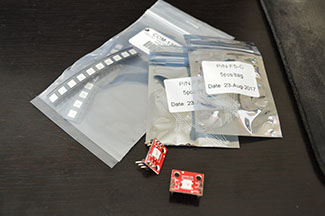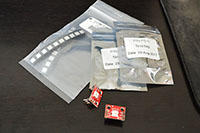Silhouette Box (Billings)
I imagined a shadow box style light with a city skyline silhouette in front for a little bit and finally got the materials to give it a whirl. Learning from the previous bathroom light with the 406 and Montana state design that I cut out with my Dremel, I felt more comfortable with trying something more difficult. I am a big fan of using my Dremel, it’s a highly recommended tool for any builder/maker. The programming and design for this project was relatively easy because of previous projects using similar parts, the main thing was getting the correct amount of light and the colors dialed in.


Next, I focused on the enclosure. Using the make-shift cardboard box as an example, I went down to the garage to create it out of pine and plywood. I printed out some stylish titles of the Billings skyline and a Billings title and attached them to the wood I wanted to use for those pieces. During this round of routing with the Dremel, I learned that vibrations are not your friend for thin parts, I broke a couple letters when the lettering got to thin. I changed up the design to accommodate this and decided for a stylish, and oddly my first choice in font, BlowBrush. I cut out the letters out cleanly and painted them black, and I cut the skyline out and used a chisel to clean up the sharp edges. Painted the box light brown to allow the black colored Billings title to be clearly seen during daytime. I made a simple box frame out of 1x3 pine wood I picked up from Home Depot. I wanted the title to be the only thing raised on the front, so I routed a slot for the skyline face place to sit flush. I put a shelf for the light bar to sit on, and to keep the wires and other pieces from casting a shadow. I painted the inside the box light gray. I wanted to use a Montana theme background and went with “Big Sky” and painted some clouds so when the RGB LEDs were on, it would show some clouds above the skyline. To be honest, I need more practice painting clouds, but I am pleased with the effect. I test assembled it and was satisfied with how the PIR sensor blended-ish in with the clouds, and how it functioned. The PIR sensor detected motion and the lights cycled correctly and the painting looks good with the colors I picked for the RGB LEDs. This is the first décor of its kind that I know of, and the first round was a total success. I have plenty of ideas for other cities and even team themed projects, but for now, this gets to live in our spare bedroom as the décor lighting that turns on once you open the door and turns off once you leave the room.
Difficulty:
I give this project 3 stars because the learning curve of routing the 1/8” plywood designs, it was an unforgiving process. The programming wasn’t necessarily difficult, but it did a long time to program all 81 colors and create a template to use the WS2812B module. Going forward, these will be easier, and I have an idea of using a laser cutter instead of Dremel to achieve more precise designs.
 JD Presents | Development In Reach
JD Presents | Development In Reach
.JPG)
.JPG)
.JPG)
.JPG)
.JPG)
.JPG)
.JPG)
.JPG)
.JPG)
.JPG)
.JPG)
.JPG)
.JPG)
.JPG)
.JPG)
.JPG)
.JPG)